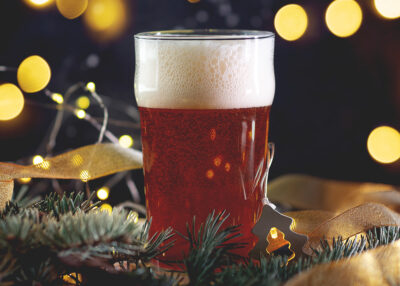In this case, the name tells the story. It’s a beer that is only brewed in the winter and has a slightly higher ABV to help “keep you warm” during the holiday season.
But if that’s all there was to it, this wouldn’t be much of an article! So let’s dig deeper.
The style started in areas where climates cooled down in the later months of the year and people were in the mood for beverages that had more body (and more alcohol) to warm them up. And before stouts and porters arrived, these brews tended to be either a spiced Wassail or Strong English Ale. Wassails used spices like nutmeg, allspice, cinnamon or clove, while a Strong Ale used more modern spicing agents like hops.
These two styles would become the foundation of beers that fall into the “Warmer” category and lend their malty backbone with hints of spice or fruit to the group.
Winter Warmers are usually between 5% – 8% ABV and brown in color. If they are higher in ABV and darker, they start to cross over into stout territory.
Pairing a Winter Warmer
You can take this pairing in a few different directions. Some people swear a Winter Warmer goes great with a Christmas turkey, or other types of poultry. And others say you have to try it alongside your Christmas cookies. A third group believes that the style shouldn’t be paired with anything, but instead should be enjoyed on its own!
We would encourage you to try it every single way and even think up new ways to experiment with it to see what tastes best for you.
Serving a Winter Warmer
Experts recommend serving a winter beer at a temperature between 45-55° F. As for the glass, use a pint glass or nonic glass for those with a lower ABV. If it has a high ABV, then you should try using a snifter or thistle glass.
Make sure you try our Winter Warmer! It’s rich with caramel, molasses, and fruity flavors up front, finishing with a good dose of hop bitterness. Lots of Munich malt lends toasty malt notes.
Cheers!
